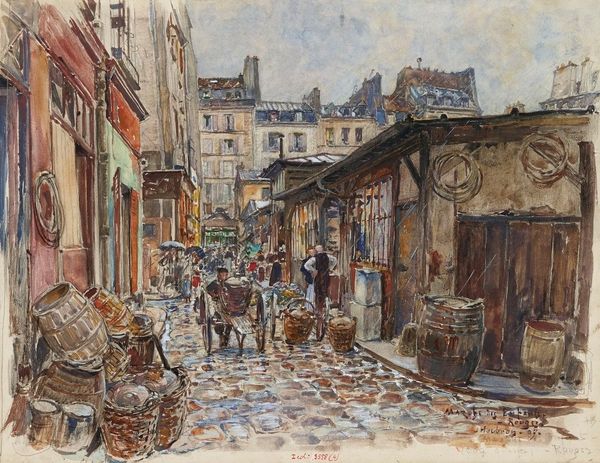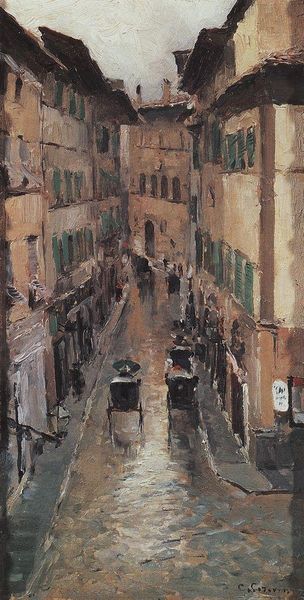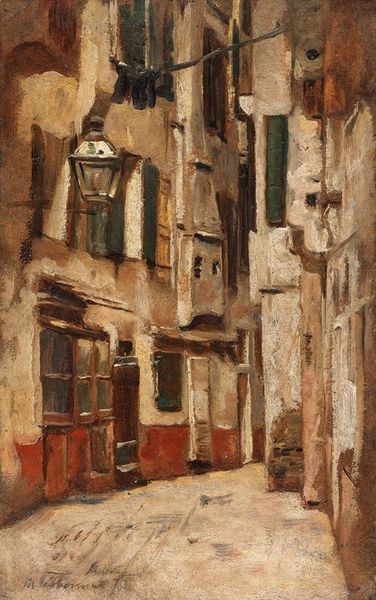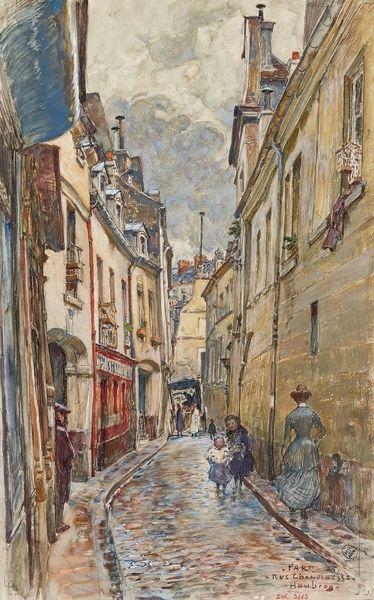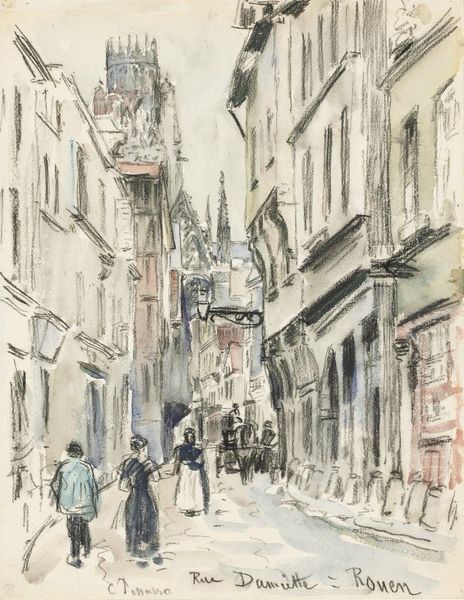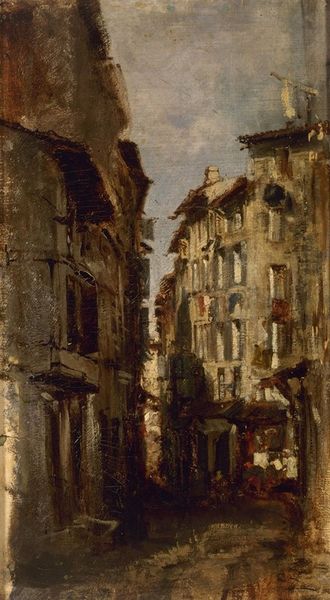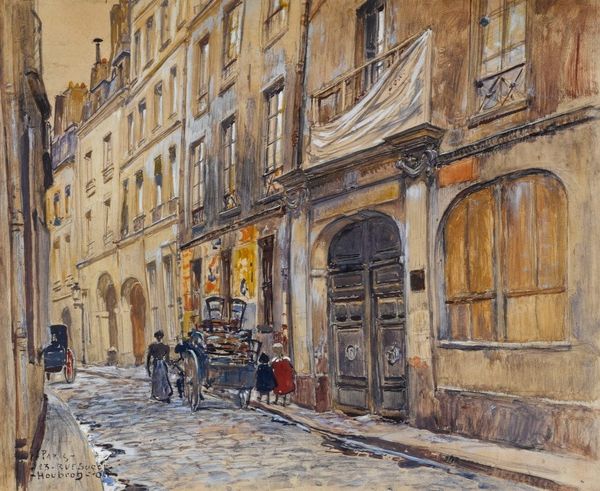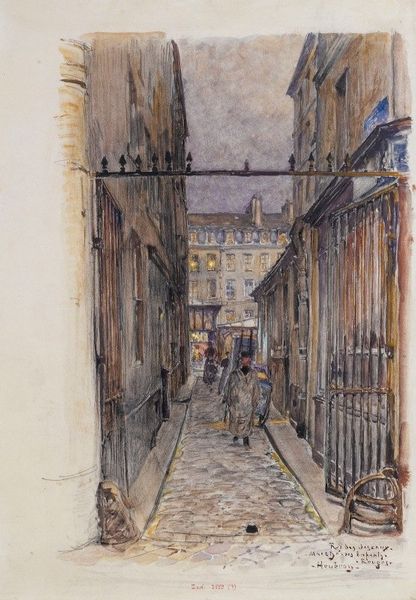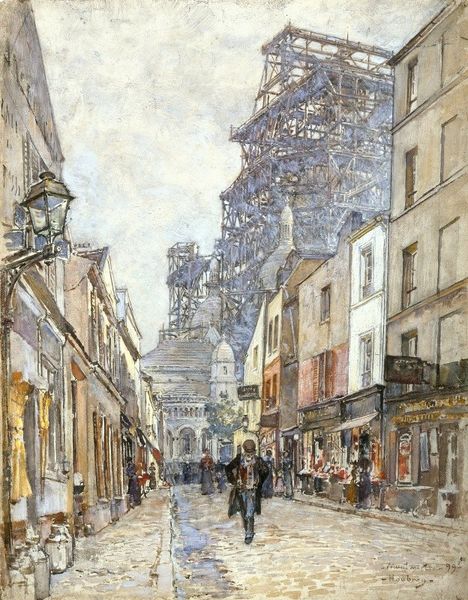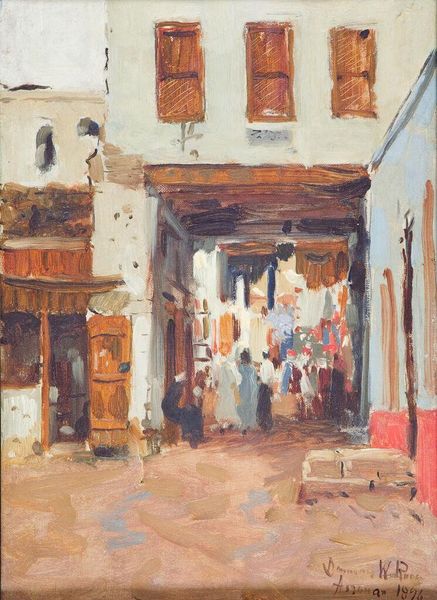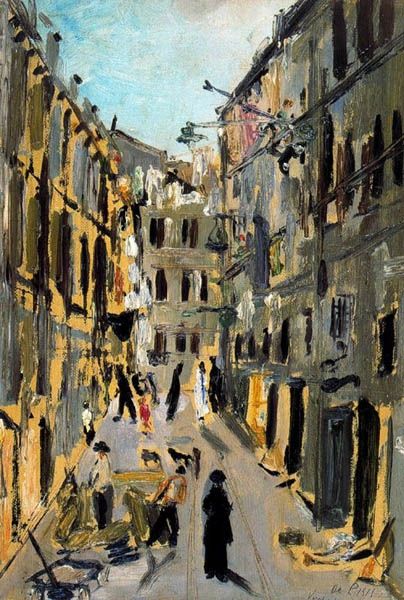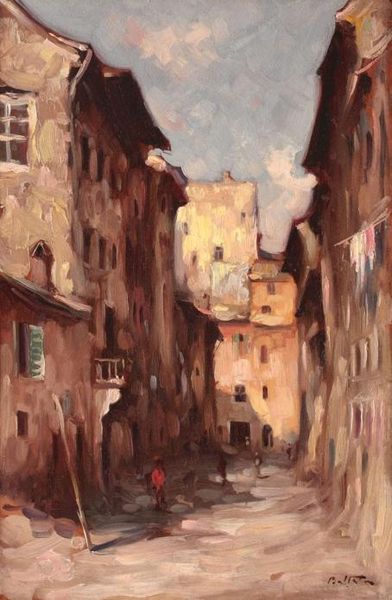
Copyright: Public Domain: Artvee
Editor: Here we have Frédéric Houbron’s “La rue Taille-Pain,” painted in 1898 using oil paint. It gives off a slightly melancholic, almost haunted feel to me; like the people are ghosts of Paris past. What strikes you about this piece? Curator: I find this evocative not of ghosts, but of a collective memory etched onto the Parisian cityscape. The architecture itself, rendered in muted tones, speaks volumes. Note how the street, the ‘Taille-Pain,’ translates to 'bread-cutting.' Bread: a visual symbol loaded with a deep resonance to the history, subsistence, life and death for those in French society. Editor: Bread as in, the literal food? Curator: Not just. But the loaded cultural signification surrounding daily life: of community, and shared meals in daily French existence. Notice the people gathered, the very act of sitting at cafes; they, too, become symbols interwoven into the urban tapestry. It's about continuity. What stories do you think these stones and these people whisper to us? Editor: That's fascinating. It really shifts how I see it, moving beyond a simple street scene. It becomes a story, a preserved moment about Parisians and daily sustenance and community. It’s as if Houbron has frozen a transient moment into a lasting symbolic narrative. Curator: Exactly! Houbron captured the ordinary, imbuing it with lasting significance. It’s a beautiful study of the past through a glimpse into daily existence.
Comments
No comments
Be the first to comment and join the conversation on the ultimate creative platform.
